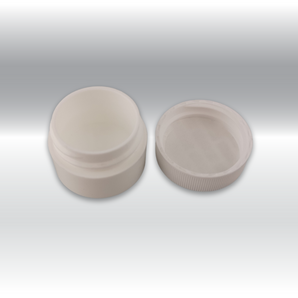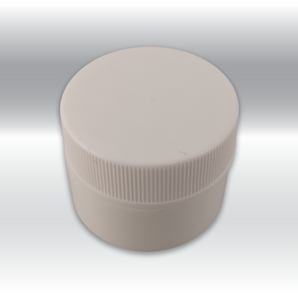Tech Specs
205 Fast Hardener is a medium-viscosity epoxy curing agent. It is used in a majority of situations, at lower temperatures and to produce a rapid cure that develops its physical properties quickly at room temperature. When mixed with the 105 Resin in a five-part resin to one-part hardener ratio, the cured resin/hardener mixture yields a rigid, high-strength, moisture-resistant solid with excellent bonding and coating properties. Not intended for clear coating.
Mix Ratio: 5 parts resin : 1 part hardener
Pot Life at 72°F (22°C): 9 to 12 minutes
Cure to a solid state: 6 to 8 hours
Cure to maximum strength: 1 to 4 days
Minimum recommended temperature: 40°F (4°C)
206 Slow Hardener is a low-viscosity epoxy curing agent for use when extended working and cure time is needed or to provide adequate working time at higher temperatures. When combined with 105 Resin in a five-part resin to one-part hardener ratio, the cured resin/hardener mixture yields a rigid, high-strength, moisture-resistant solid with excellent bonding and coating properties. Not intended for clear coating.
Mix Ratio: 5 parts resin : 1 part hardener
Pot Life at 72F (22C): 20 to 25 minutes
Cure to a solid state: 10 to 15 hours
Cure to maximum strength: 1 to 4 days
Minimum recommended temperature: 60°F (16°C)
207 Special Clear Hardener was developed for coating and fiberglass cloth application where an exceptionally clear, moisture-resistant, natural wood finish is desired. 207 Hardener will not blush or turn cloudy in humid conditions. Thin film applications roll out and tip off smoothly, requiring less sanding in preparation for finish coatings.
Professional and first-time builders like 207 because it is reliable and easy to use. Three coats or more can be applied in one day without additional surface preparation. Fewer coats are required to fill fiberglass weave and in most cases the final coating can be sanded the following day. Boats can be built faster. Builders also appreciate the excellent fiberglass wet-out characteristics achieved with 105/207, yet it won't drain from vertical surfaces like the very slow curing, low-viscosity epoxies.
105/207 has strong physical properties, so it can be used as a structural adhesive for gluing and laminating. It has excellent compatibility with paints and varnishes. An ultraviolet inhibitor in 207 helps provide a beautiful, long lasting finish when used with quality UV filtering varnish. 105/207 cures clear and colorless.
Mix Ratio 3 parts resin : 1 part hardener
Pot life at 72°F (22°C) 20 to 26 minutes
Cure to a solid state 10 to 15 hours
Cure to maximum strength 4 to 7 days
Minimum recommended temperature 60°F (16°C)
209 Extra Slow Hardener is formulated for use with WEST SYSTEM Brand 105 Resin for general coating and bonding applications in extremely warm and/or humid conditions or when extended working time is desired at room temperature. Provides approximately twice the working time of 206 Slow Hardener. Forms a clear, amber-colored solid with good physical properties and moisture resistance for bonding and coating applications. Not intended for clear coating.
Mix Ratio 3 parts resin : 1 part hardener
Pot life at 72°F (22°C): 40 to 50 minutes
Pot life at 95°F (35°C): 15 to 20 minutes
Cure to a solid state at 72°F (22°C): 20 to 24 hours
Cure to a solid state at 95°F (35°C): 6 to 8 hours
Cure to maximum strength at 72°F: 4 to 9 days
Minimum recommended temperature: 70°F (21°C)
Additional Information
Video
Dispensing & Mixing
Basic Bonding
Instructions
Choose 205 Fast Hardener when Cold-Weather Bonding
- 205 Fast Hardener is formulated to cure well at temperatures as low as 40°F (4°C). This will require an extended cure time before removing clamps or sanding.
- For best results in cold weather warm 105 Resin and 205 Fast Hardener before using. Cold temperatures increase the viscosity of the epoxy making it more difficult to dispense mix and apply. Warming resin and hardener reduces their viscosity so they flow through dispensing pumps better cling less to your mixing equipment and blend more easily for thorough mixing. A warmer lower-viscosity mixture will flow more smoothly during application and penetrate porous surfaces more readily.
- Always dispense 105 Resin and 205 Fast Hardener at the proper mixing ratio. Altering the amount of hardener will seriously compromise the epoxy’s ultimate strength. WEST SYSTEM 300 Mini Pumps are calibrated to dispense the correct resin-to-hardener ratio with one full pump stroke of resin for every one full pump stroke of hardener. If you are not able to warm the resin and hardener do not use excessive force when dispensing. Keep steady pressure on each pump allowing each pump head to make a full stroke down and a full stroke up. Remember the resin and hardener become thicker and more difficult to pump when they are cold and require significantly more time to return to the top of the stroke.
- Stir the resin and hardener thoroughly for at least 2 minutes in a small pot scraping the sides and bottom of the mixing container. Use a mixing stick shaped to reach the corners of the pot. A smaller diameter mixing pot increases the chemical reaction between resin and hardener because its limited surface area prevents heat from dissipating too quickly. Let the mixed epoxy sit in the pot a little longer before applying.
- Prepare cured epoxy surfaces between applications. When coating at cold temperatures the slower cure can result in the formation of an amine blush a waxy/greasy film on the surface of the cured epoxy. Wash the surface with warm water using a 3-M Scotchbrite™ pad before applying subsequent epoxy coatings to a cured surface. Don’t let the water evaporate. Dry the surface with plain white paper towels. Sand any remaining glossy areas with a medium-grit sandpaper.
- Allow additional cure time before removing clamps or stressing joints. As a general rule double the cure time for every 18°F (10°C) drop in temperature. Allow additional cure time of more than the 18°F (10°C) rule when bonding pre-stressed joints bent laminations or joints that will be subjected to high loads.
- Elevate the temperature of partially cured epoxy. Elevating the temperature of the epoxy after initial cure can help to complete the epoxy mixture’s cross-linking and boost the epoxy’s physical properties even after a week at cold temperatures. Elevate the temperature of the epoxy and substrate gradually to avoid thermal shock. Although any temperature elevation will improve cross-linking try to boost the temperature to 72°F (22°C) or warmer. The time required for final cure depends on the hardener used and the temperature the epoxy is exposed to. Generally higher temperatures require shorter cure times. Do not exceed 140°F (60°C) and do not remove clamps or load the joint until the epoxy has cooled.
Read more about Cold-Temperature Bonding in Epoxy Basics or at Epoxyworks.





